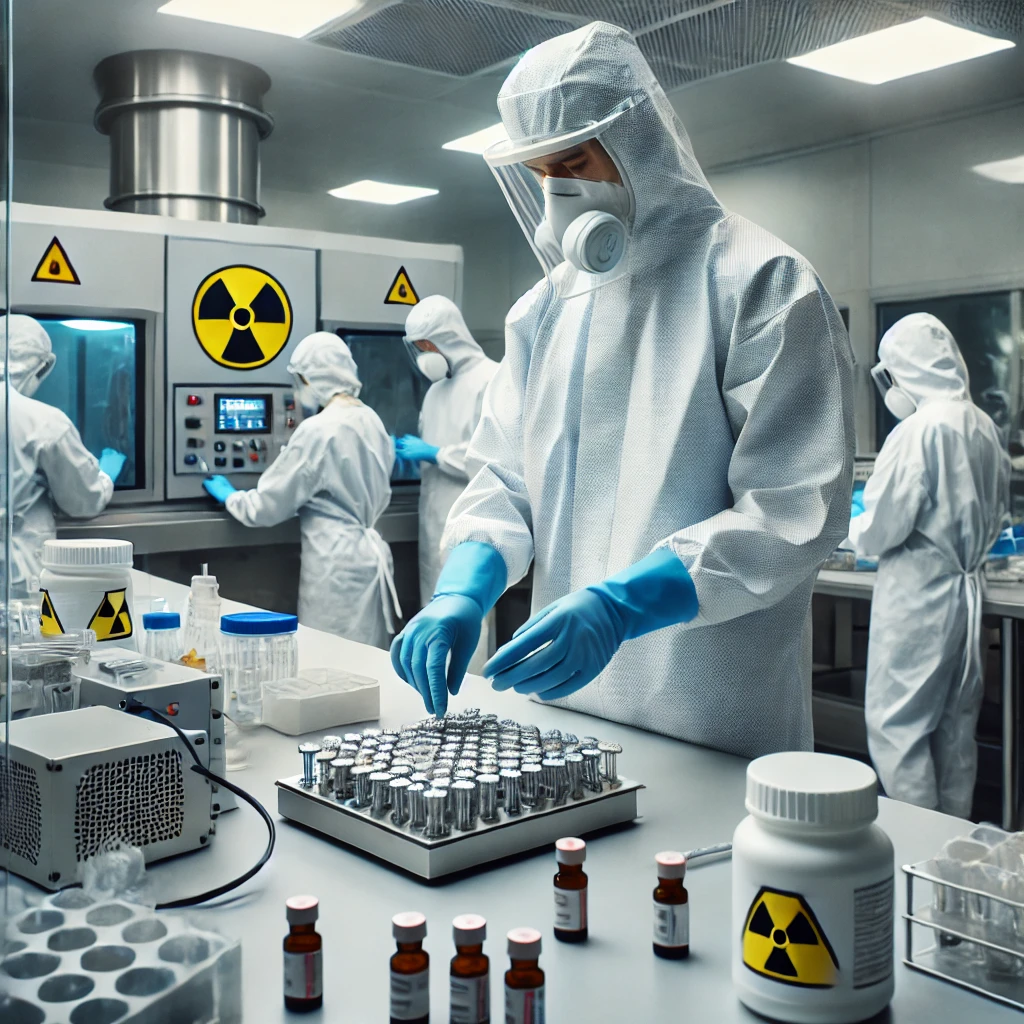
Unlocking the Future of Medicine: The Vital Role of Radiopharmaceutical Manufacturing
Did you know that radiopharmaceuticals are one of the most advanced forms of cancer therapy? They’re literally helping save lives every day, but what’s truly fascinating is how complex and highly regulated their manufacturing process is. From creating the radioactive components to ensuring their purity and potency, it’s a field where precision is paramount.
Understanding radiopharmaceutical manufacturing is essential for anyone involved in the pharmaceutical or healthcare industries. In this guide, we’ll break down the entire process—from discovery to the final product. Whether you’re working in radiopharmaceuticals or are just curious, this guide will walk you through everything you need to know!
What Are Radiopharmaceuticals and Why Are They Important?
Radiopharmaceuticals are unique because they combine radioactive isotopes with pharmaceutical compounds to create diagnostic and therapeutic treatments. They’re most commonly used in nuclear medicine, especially for diagnosing cancers, heart disease, and other medical conditions.
What sets them apart is the use of radioactive isotopes. These isotopes emit radiation that can be detected by imaging equipment, providing doctors with valuable insights into how a patient’s body is functioning.
Radiopharmaceuticals are changing the game, especially in cancer treatment. They allow doctors to target cancer cells more precisely, minimizing damage to healthy tissue while increasing the effectiveness of treatment. It’s a targeted therapy that promises to be more effective than traditional methods.
The Radiopharmaceutical Manufacturing Process
Manufacturing radiopharmaceuticals is not like creating ordinary drugs. It’s a meticulous, multi-step process that requires precision, skill, and a solid understanding of chemistry, biology, and radiology.
From Discovery to Production: The journey begins with the discovery of a new drug that combines a radioactive element with a pharmaceutical molecule. Once the formula is created, it undergoes rigorous testing to ensure it can be safely produced and used.
Key Stages:
- Synthesis: The radioactive isotope is attached to the pharmaceutical molecule. This step is highly sensitive, as the ratio of radioactivity must be precisely controlled.
- Radiolabeling: The molecule is labeled with the radioactive isotope.
- Purification: Ensuring that the radiopharmaceutical is free of contaminants and is pure enough for use.
- Testing: Final testing ensures it’s safe, effective, and meets regulatory standards
Key Equipment Used in Radiopharmaceutical Manufacturing
When it comes to radiopharmaceutical production, the equipment is as specialized as the process itself.
Types of Reactors and Cyclotrons: These are used to produce the radioactive isotopes. Cyclotrons are often used in the creation of isotopes like Fluorine-18, which is commonly used in PET scans.
Automated Systems and Robotics: These are utilized for both production and packaging. Automation helps ensure that every batch is uniform and meets quality standards, while also improving efficiency and reducing human error.
Radiation Safety Equipment: Safety is a major concern in radiopharmaceutical manufacturing. Specialized shielding, radiation detectors, and remote handling tools are used to protect workers from exposure to harmful radiation.
Quality Control in Radiopharmaceutical Manufacturing
Ensuring that radiopharmaceuticals are both pure and potent is critical. Any deviation in the manufacturing process could have serious implications for both patients and the manufacturer.
Ensuring Purity and Potency: Every batch of radiopharmaceuticals must meet stringent standards for both purity and radioactivity. This involves thorough testing and validation at every step of production.
Methods for Testing: High-tech methods like liquid chromatography and mass spectrometry are used to test for contaminants and ensure the drug’s consistency. These techniques help to confirm that the product is both safe and effective.
Avoiding Contamination: Since radiopharmaceuticals are often injected directly into the bloodstream, preventing contamination is crucial. Cleanroom environments and sterile handling processes are used to minimize any risk.
Regulatory Compliance in Radiopharmaceutical Manufacturing
Manufacturing radiopharmaceuticals isn’t just about science; it’s also about following strict regulations to ensure safety and quality. FDA guidelines and international standards are in place to protect patients and the general public.
FDA and International Standards: The FDA enforces rules for both radiopharmaceutical manufacturing and clinical testing. These guidelines ensure that manufacturers adhere to rigorous standards in production, packaging, and distribution.
Good Manufacturing Practices (GMP): GMP is the backbone of pharmaceutical manufacturing. It ensures consistency and quality throughout the production process and is enforced by regulatory bodies worldwide.
Documentation: Keeping accurate records of every step in the manufacturing process is essential. This includes production logs, safety reports, and testing results, all of which are reviewed by regulatory bodies.
Challenges in Radiopharmaceutical Manufacturing
Manufacturing radiopharmaceuticals is incredibly rewarding, but it’s also fraught with challenges.
Handling Radioactive Materials Safely: Due to the inherent dangers of working with radioactive isotopes, safety protocols must be followed to the letter. This means wearing protective gear, using remote-controlled equipment, and adhering to radiation exposure limits.
Scaling Up Production: As demand for radiopharmaceuticals increases, manufacturers often face the challenge of scaling up production. This requires investment in specialized equipment and facilities, not to mention managing the logistical issues associated with shipping radioactive materials.
Supply Chain and Logistical Issues: Since radiopharmaceuticals have a limited shelf life and must be stored in specific conditions, managing the supply chain can be tricky. Specialized transportation methods are required, along with strict time constraints.
Future Trends in Radiopharmaceutical Manufacturing
The future of radiopharmaceutical manufacturing is bright, and new technologies are continuously emerging to make the process faster, safer, and more efficient.
Automation and AI: Advances in artificial intelligence and automation are already transforming the way radiopharmaceuticals are produced. AI can help monitor and optimize the manufacturing process in real-time, improving both efficiency and quality.
Personalized Medicine: Radiopharmaceuticals are at the heart of the personalized medicine movement. The future may see more radiopharmaceuticals tailored to an individual’s genetic profile, allowing for highly targeted and effective treatments.
Emerging Technologies: Nanotechnology, 3D printing, and new radiation therapies are all set to revolutionize the way we manufacture and administer radiopharmaceuticals, offering exciting new possibilities for the treatment of cancer and other diseases.
The Road Ahead for Radiopharmaceutical Manufacturing: Innovations and Opportunities
Radiopharmaceutical manufacturing is a highly specialized and rapidly evolving field. From ensuring the purity and potency of each batch to adhering to strict regulations and safety protocols, every step in the process requires precision and care. As technologies continue to advance, we can expect the industry to become even more efficient, allowing for better treatment options and faster delivery of life-saving therapies.
If you’re involved in the field of radiopharmaceuticals or are considering entering this industry, staying informed about the latest trends and best practices is essential. Your thoughts and experiences are valuable, so feel free to share them in the comments below! Let’s continue the conversation on how we can shape the future of radiopharmaceutical manufacturing together!

Leave a Reply